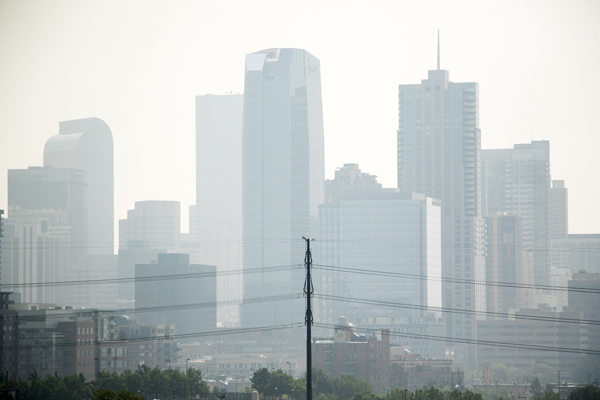Listen to this article

Ozone alerts seem to be a fact of life nowadays. We have been battling issues with air quality in Colorado for decades. Even though Coloradans have been striving to slow down the impact humans have on the environment the number of ozone action days each year continues to increase.
Why are there more ozone action days now?
According the Colorado Department of Public Health and Environment (CDPHE):
“If you have been following Colorado’s ozone action days, you may have noticed that we had more action days last summer than in previous years. This is because, in 2015, EPA lowered the standard for ozone concentration from 75 parts per billion to 70 ppb. Since then, we issue an action day alert any time the expect the ozone level in Colorado to be over the 70 ppb standard. These action days do not mean that the air quality in Colorado is getting worse. In fact, the opposite is true. Since the 1990 Clean Air Act Amendments, EPA has slowly lowered the ozone standard from 85 ppb to 70 ppb, and Colorado has worked to lower the amount of ozone pollutants that are produced in our state. Despite the air pollution challenges associated with increasing population, our ozone levels have improved over time. Air quality in Colorado is getting better, but not quickly enough to meet EPA’s lowering standards. This is why there may be more ozone action days this ozone season.”
What is ozone anyway? and why should I care?
Here is a good explanation of ozone from the Environmental Protection Agency (EPA):
Ozone is a gas composed of three atoms of oxygen. Ozone occurs both in the Earth’s upper atmosphere and at ground level. Ozone can be good or bad, depending on where it is found.
Called stratospheric ozone, good ozone occurs naturally in the upper atmosphere, where it forms a protective layer that shields us from the sun’s harmful ultraviolet rays. This beneficial ozone has been partially destroyed by manmade chemicals, causing what is sometimes called a “hole in the ozone.”
Ozone at ground level is a harmful air pollutant, because of its effects on people and the environment, and it is the main ingredient in “smog.”
Ground level ozone is not emitted directly into the air, but is created by chemical reactions between oxides of nitrogen (NOx) and volatile organic compounds (VOC). This happens when pollutants emitted by cars, power plants, industrial boilers, refineries, chemical plants, and other sources chemically react in the presence of sunlight.
Ozone in the air we breathe can harm our health, especially on hot sunny days when ozone can reach unhealthy levels. Symptoms can include, stinging eyes and throat, chest pains, coughing and breathing difficulty. Luckily ozone alerts and air quality forecasts help us keep track of the danger.
The latest edition of Spheres (Edition 14, 2022), a publication from the Cooperative Institute for Research in Environmental Sciences (CIRES) at the University of Colorado Boulder, has an interesting article about new research showing that personal care products like deodorant, sunblock, and bug spray contribute significantly to the amount of ozone pollution in urban areas. As population density increases emissions from consumer products have become just as important as emissions from cars and trucks when it comes to air quality concerns. Recent studies by the CIRES have shown that in cities, emissions from fossil fuel-based chemicals in consumer products contribute up to half or more of the total pollution produced by human activities.
What can I do?
Wondering what you can do to help reduce ozone and improve our summer air? The Colorado Department of Public Health and Environment and the Regional Air Quality Council have launched a campaign that can help Coloradans take simple steps toward better summer air. Check out the SimpleStepsBetterAir.org website for tips on what you can do.
For further reading, take a look at these publications in our collection:
- Colorado Air Quality Control Commission Report to the Public
- 2020 Air Quality Data Report
- Colorado Electric Vehicle Plan 2020
- Have you Registered to Vote? - September 17, 2024
- The Castlewood Canyon Flood of 1933 - August 3, 2023
- Holiday Selections - December 22, 2022